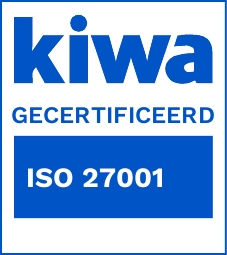For occupational physicians and HR professionals
Work stress is one of the most common causes of absenteeism. Sometimes it simmers for months under the surface, until an employee becomes incapacitated. And then it is often difficult – and expensive – to quickly turn the situation around.
For both occupational physicians and HR professionals, this is an important task: identifying, talking to and working together to ensure an approach that works. In this blog, we list the most important causes, signals and tools – from a psychological perspective.
Why does work stress arise?
Work stress is usually not caused by one clear cause, but by a combination of factors. Think of:
- High work pressure: too many tasks, too little time.
- Lack of direction: little influence on one’s own work or work environment.
- Uncertainty about expectations, tasks or role division.
- An unsafe atmosphere or tensions within the team.
- Personal characteristics such as perfectionism, difficulty setting boundaries or a great sense of responsibility.
Employees who are loyal and “always keep going” are particularly at risk. They rarely ask for help themselves – until they really can’t anymore.
What are the signals to look out for?
The signals of work stress are often subtle, especially in the beginning. Company doctors hear them in consultations. HR sometimes notices them in behavior or conversations on the work floor. Examples include:
- Fatigue that does not go away, even after rest.
- Poor sleep, worrying or difficulty relaxing.
- Short fuse, emotional reactions or withdrawal.
- Problems with concentration or memory.
- Loss of motivation or the feeling of losing control.
Also pay attention to repeated short absences or employees who indicate that they “can keep going”, but are running out of steam in the meantime.
What can you do – and especially: what can you do together?
Company doctors can identify them early in conversations during absence management or during medical consultations. HR can pick up signals from practice: behavior, atmosphere, productivity or feedback from colleagues or managers. The power lies in collaboration.
What helps:
- Start the conversation, accessible and without judgement.
- Refer in time, for example to an occupational psychologist, if the mental burden increases.
- Consider temporary adjustments in tasks or hours to relieve the pressure.
- Keep in touch during and after absence – recovery is often erratic.
- Create a culture together in which stress can be discussed, and asking for help is normal.
Collaborate with psychologists: earlier insight, faster recovery
A (occupational) psychologist can help to clarify the causes of stress – at an individual and organization-wide level. Psychologists offer employees insight into their stress mechanisms, help to regain control and provide tools to make sustainable change.
For HR and company doctors it can be valuable to:
- Briefly consult with a psychologist when there are signs of mental overload.
- Make a plan together in which work and recovery are in balance.
- Deploy coaching or guidance before an employee is absent. Discussing trends or bottlenecks in teams or organisations – and tackling them.
Preventive collaboration with psychologists not only results in individual recovery, but also contributes to a healthier working environment.
Prevention often starts before the sick leave
Tackling work stress requires collaboration – between HR, company doctor, psychologist and managers. Everyone has their own role and perspective in this. By taking signals seriously and having the conversation in time, we can do a lot for employees who are under pressure.
And sometimes it helps to have a psychologist involved, to gain a little more insight into what someone needs to continue to function well. This does not have to be done when someone is out of action – a lot of gain can be made in the phase before that.



